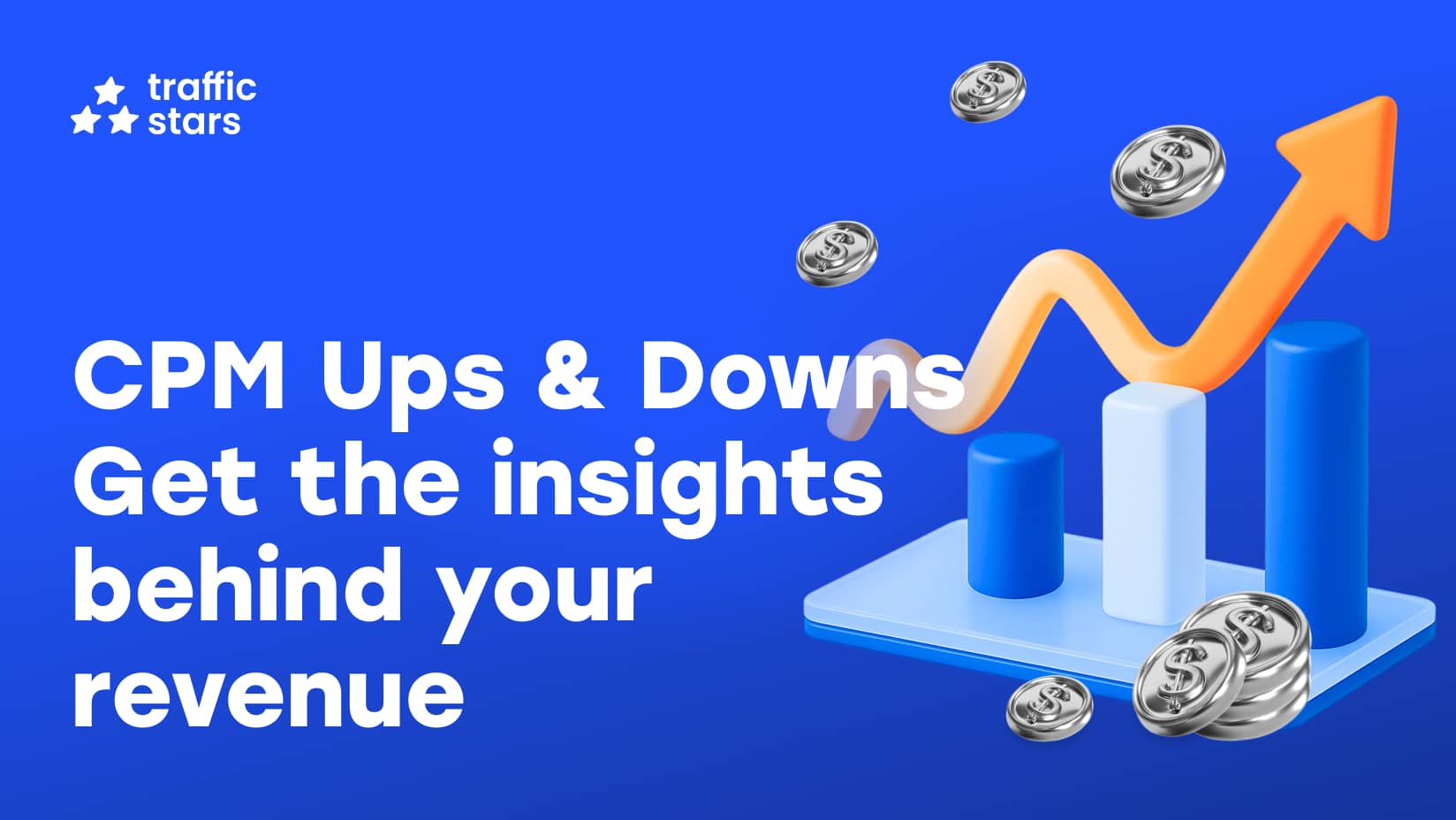
If you’ve ever checked your statistics and wondered, “Why are my CPM rates changing?”, you’re not alone. CPM (cost per mille, or cost per 1,000 impressions) is a dynamic metric that constantly changes - sometimes daily. Fluctuations don’t necessarily mean something is wrong. In fact, they’re a normal part of how online advertising works. Let’s break down the main reasons behind CPM changes and what you, as a publisher, can do to make the most of them.
1. Advertising campaign testing and optimization phases
When a new advertising campaign is launched targeting your traffic, it usually starts with a testing phase. During this time, advertisers test multiple targeting settings, creatives, and bidding strategies to find what works best.
- At first, CPMs may rise - advertisers bid higher to get more traffic and gather data faster.
- After optimisation, CPMs may drop slightly or rise even more as campaigns stabilise and advertisers fine-tune bids based on performance and conversion results. This cycle is completely natural. New tests often bring temporary boosts, while optimisation brings consistency.
Tip: Keep your traffic quality high and placements clear - it helps advertisers move campaigns out of testing faster, stabilising your CPM.
2. Seasonality and Holidays
CPMs follow seasonal patterns tied to marketing budgets, holidays, and user behaviour. Understanding these trends helps you plan and optimise for both high and low periods.
High-demand periods
- Q4 (October–December): Black Friday, Cyber Monday, Christmas, and New Year campaigns create fierce competition for impressions
- Valentine’s Day: Certain verticals increase spend in February.
- Summer spikes can occur depending on GEO and niche.
Lower-demand periods
- January: After Q4, advertisers reset budgets; CPMs often dip.
- Early Q2: A quieter period for campaigns in many regions.
- Regional holidays: Chinese New Year, Ramadan/Eid, or other local holidays can temporarily lower demand in certain GEOs.
Tip: Track your traffic and scale up placements or traffic volume during peak advertiser demand periods.
3. GEO and Traffic Quality
Advertisers value traffic differently depending on its source. CPMs vary significantly by GEO, device, and engagement level.
- T1 GEOs (US, UK, Germany, Canada) tend to deliver the highest CPMs.
- T2–T3 GEOs usually pay less, but high-quality traffic can still be very profitable. High-quality traffic keeps advertisers bidding, while low-quality or non-engaged traffic may lead to CPM drops.
4. Ad Format and Placement Impact
Different ad formats and placements influence CPMs:
- Above-the-fold placements are more visible, generally boosting CPMs, while below-the-fold placements work best for engaged users.
- Popunder, Video ad formats, Interstitial generate high overall revenue but fluctuate with advertiser demand.
- Our Masterspot solution allows multiple ad types in one placement, increasing competition for your banner inventory.
Tip: Test multiple formats and placements regularly to find the best combination for your site and audience.
5. Market Competition and Demand
Advertising works like an auction: CPMs rise when many advertisers compete for impressions and drop when demand falls.
- High competition → higher CPMs
- Low competition → lower CPMs
Tip: Regular traffic growth, clean inventory, and diverse ad formats can help you stay attractive to multiple advertisers at once.
6. Quarterly Budget Cycles
Advertisers plan spending in quarterly cycles:
- Q1: Budgets are often tighter post-holidays; CPMs can dip (“January Blues”).
- Q2–Q3: Gradual recovery, campaigns increase steadily.
- Q4: Peak competition as companies spend more aggressively to reach annual targets.
Tip: Understanding these cycles helps publishers anticipate CPM fluctuations and align strategy with advertiser demand.
How to Keep CPMs Strong
Even though CPMs fluctuate naturally, you can maximize revenue year-round:
- Scale traffic during high-demand periods (e.g., Q4 holidays, major sales events).
- Optimise ad placement & visibility — above the fold, in-content ads, Masterspot, and video zones.
- Diversify ad formats — popunder, video, Masterspot, menu tabs, interstitials.
- Test placements regularly — small adjustments can boost engagement and CPM.
- Monitor performance metrics — impressions, viewability, and user behaviour provide insights for optimisation.
- Keep your site fast and user-friendly — this increases engagement and the likelihood of higher CPMs.
- Stay in touch with your account manager — expert guidance helps identify trends and maximize revenue.
Final Thoughts
CPM changes are part of the natural rhythm of online advertising — reflecting testing, optimisation, seasonality, and market demand. By understanding why CPMs fluctuate and applying best practices — from placement and format choices to scaling traffic during peak periods — you can turn these ups and downs into opportunities to maximize revenue. Want personalized insights about your site’s performance? Contact your TrafficStars account manager — we’ll help you optimize every impression and take advantage of seasonal demand.



.jpg)
